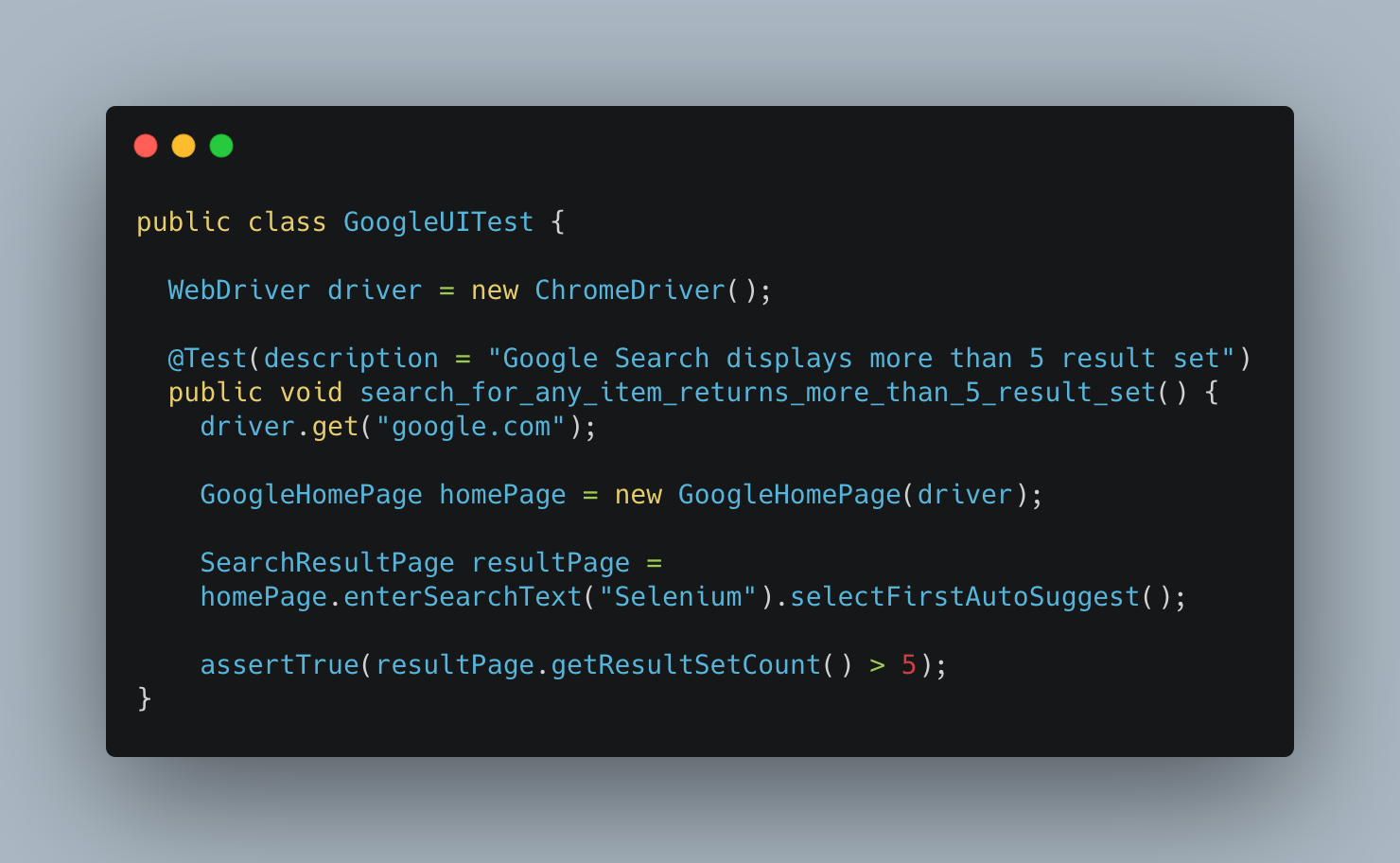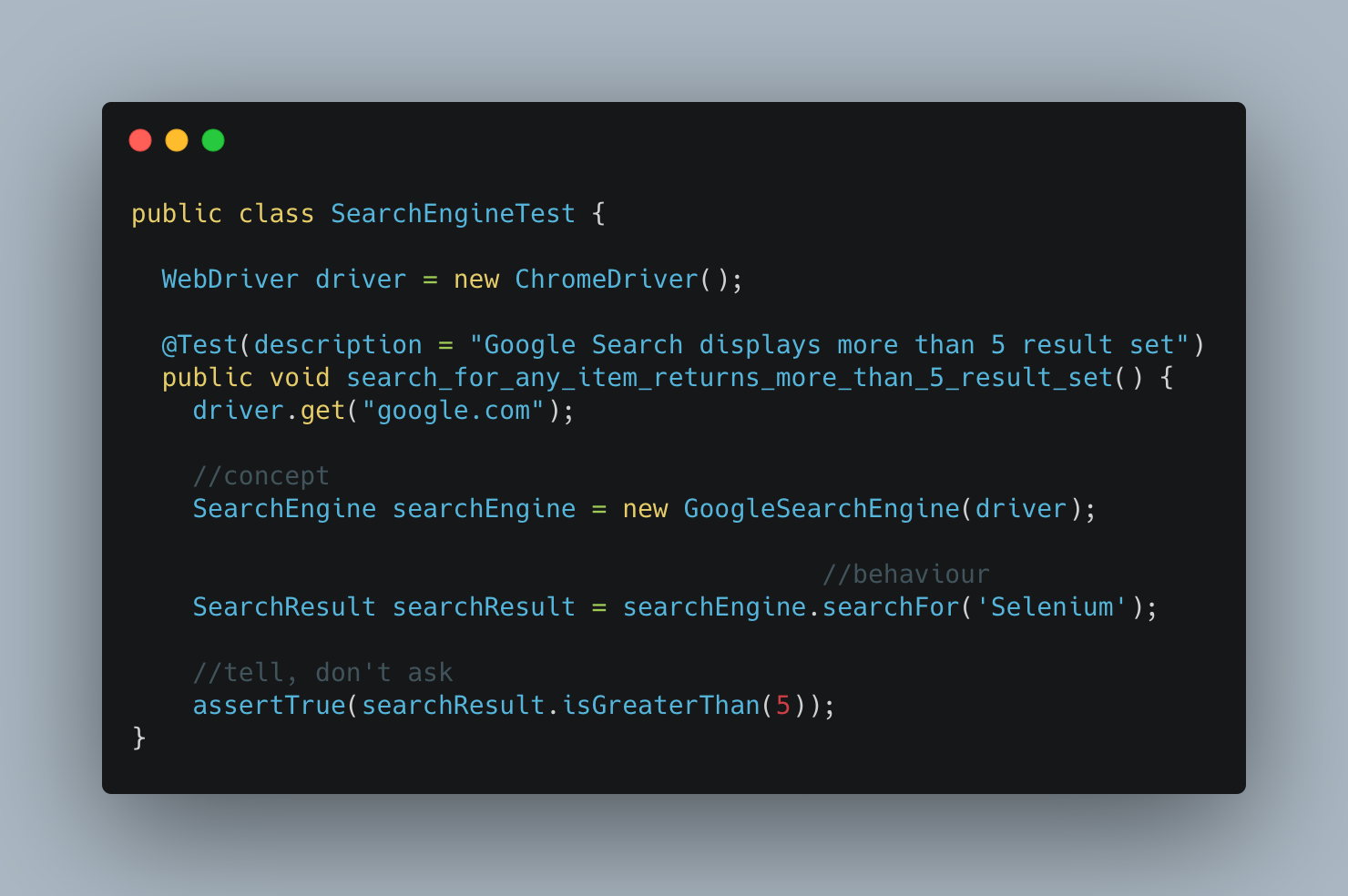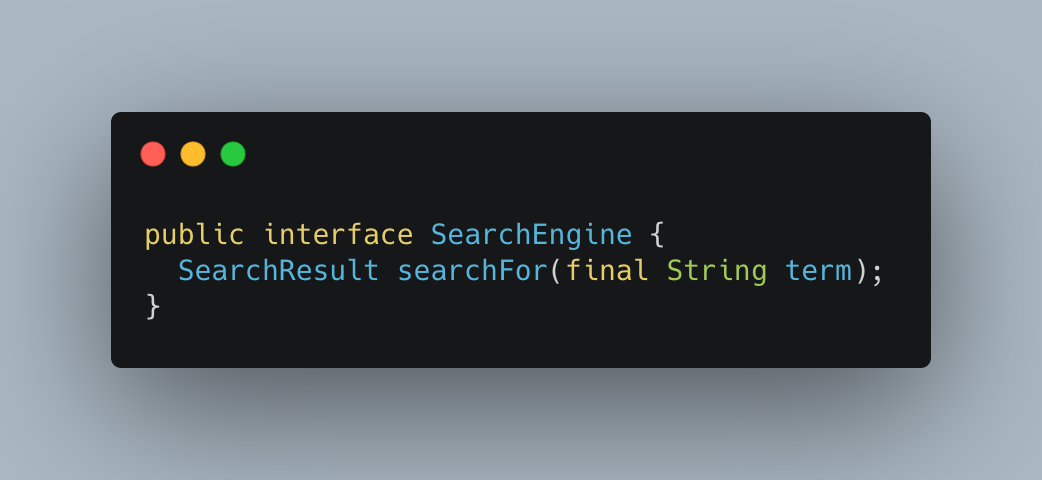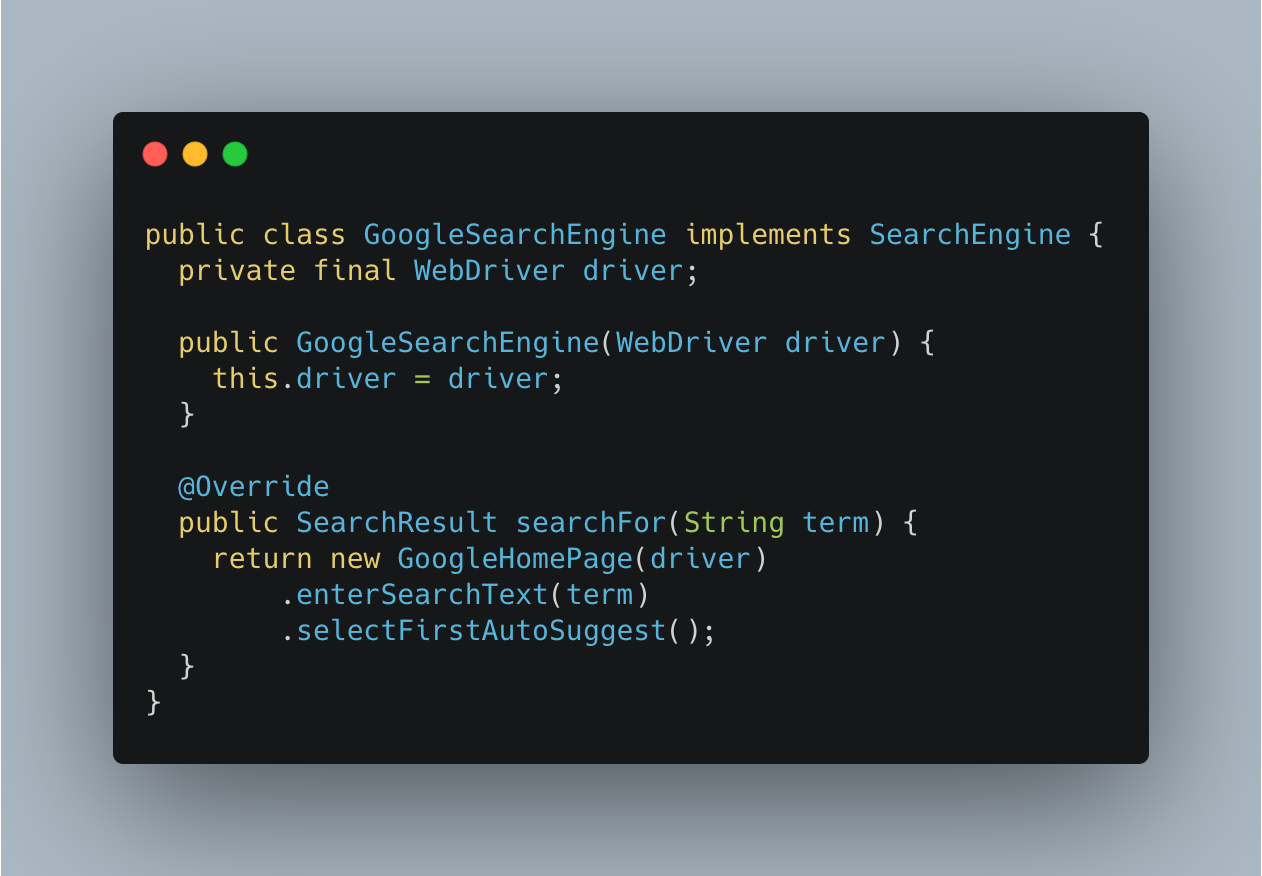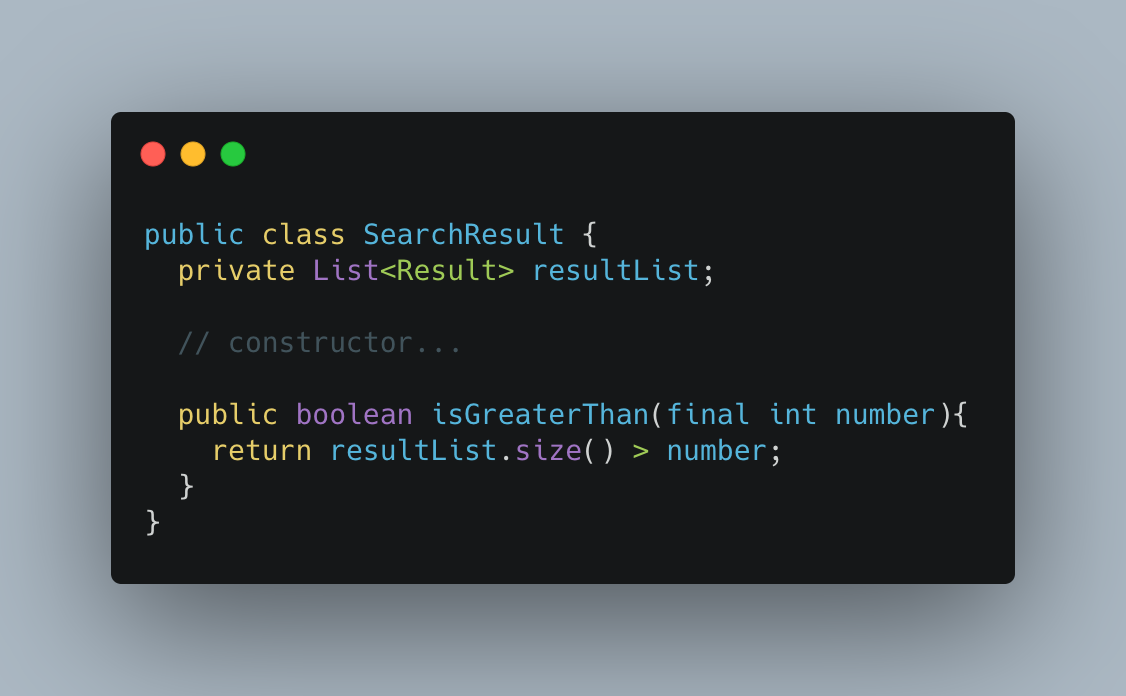
Introduction
In the last post we created our first Page Object, (read it here )
we were able to run a test to verify it works as expected.
In this guide, we’ll apply design principles to refactor the test and page objects we created.
When you’re finished, you’ll be able to create effective page objects for any UI interface you encounter using design principles.
Prerequisites
Before you begin this guide:
- Read part one
Let’s do it 💪
Lets start the refactoring with the test class:
What areas we can improve and why:
RULE: Your Test Class Should test behaviour NOT implementation.
| |
This ties the test to the page object implementation of GoogleHomePage, therefore if the page object API changes, the test would need to be modified.
| |
How the actions are done is not a concern for the test class i.e if AutoSuggest feature is removed, then this test class breaks.
assertTrue(resultPage.getResultSetCount() > 5);- This breaks the “Tell, Don’t Ask” principle" i.e the logic of checking result set against a number should not be in the test. If results and computational logic changes it will break the test.
Let’s rewrite the test class to remove these areas of concern:
Step 1:
- Identify the domain concept and the behaviours connected to it:
- For us it will be:
- Concept -
SearchEngine&SearchResult - Behaviour -
search for a term&return results for that term - Logic -
SearchResultis the domain object we tell to perform desired logic on the search result.
- Concept -
- For us it will be:
Using these approach to rewrite the test class, it should now look like this:
Voilà! all the clicks and selects et al have now disappeared!
Your test class is now decoupled from the page object.
If you replace
| |
with
| |
The test won’t concern itself about the underlying search engine in use.
Step 2:
1. Let’s build the behaviour as an Interface
2. Let’s build an implementation of the Interface using the page object to fulfil the needs of the behaviour.
3. This is the GoogleHomePage PageObject
4. Let’s build the SearchResult
What have we done so far?
- Refactored the test class to contain only behaviour not implementation.
- Identify the domain concept and related behaviours.
- Created an Interface to model the behaviour.
- Created a concrete class to implement the interface using pageobject to satisfy the behaviour.
- Modify the GoogleHomePage PageObject.
- Created Domain Class to hold SearchResult.
See all classes here for easy reference.
- Don’t copy and paste.
- Type the below code by hand.
- Read this brilliant article to understand why.
Conclusion
In this article we have applied design techniques to optimise the test and the underlying code design. Now you can run the test and put your result in the comments section.
Things to Note
In the next post in this series, we shall be applying design techniques to optimize the GoogleHomePage PageObject.
Before then, feel free to write another test using a completely different search engine in the test class and create your implementation of the interface.
I am happy to answer questions you may have, reach me on any of my handles.
